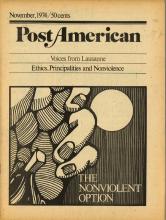What was your favorite toy when you were a child? Quite possibly it was something rather simple that seemed like it would never break—something, perhaps, that your parents made for you. It is important to give good gifts to your (I can’t say our) children; gifts that are quite the opposite of the cheap (in quality) and gaudy gadgets that pass as toys today. Teresa Kragnes, from
Get either a 12 or 14 foot piece of 1”x2” or 2”x2” clear, straight-grained white pine. Cut into two even pieces. The 7 foot stilts are recommended for older children, 6 foot for younger.
Bevel or round all the edges and sand. Then rub into the wood a mixture of one part boiled linseed oil and one part turpentine.
Make the steps from a 2” x 6” piece of fir or similar rafter or floor joice material—it must be a harder wood than white pine Look for scrap pieces near construction sites or lumber yards. You can probably get this free. Cut the step piece according to measurements on the diagram.
Attach the step pieces to the stilts with husky, countersunk flathead wood screws (#8 shank by 2” long is a good size). The top of the step piece should be from 14 to 20 inches from the ground. This will depend on the size and agility of the child, the higher one being more difficult to manage.
Read the Full Article

